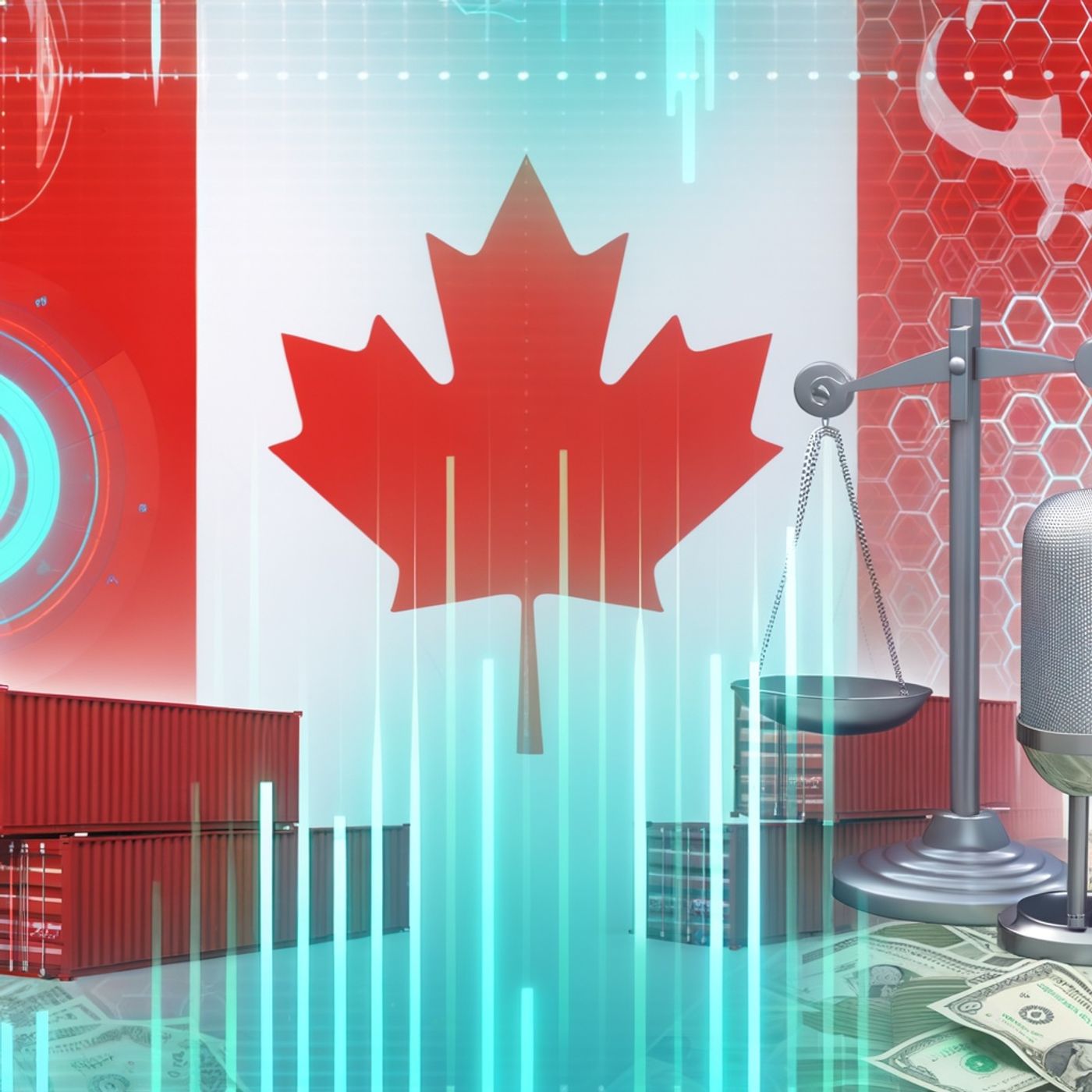Trump Imposes Massive 25% Tariffs on Canada Shattering Trade Relations and Sparking Economic Tensions Across North America
Update: 2025-09-29
Description
Listeners, as of September 29th, 2025, the biggest headline dominating tariff news between the U.S., Donald Trump, and Canada is Trump’s expansion of his aggressive tariff strategy, shaking up trade corridors and supply chains in ways unseen since the 1930s. The Trump administration this year imposed a blanket 25% tariff on imports from Canada and Mexico—marking a historic break from the spirit of free trade embodied in agreements like USMCA, as covered by a GEP analysis and reporting from AInvest and multiple economic think tanks.
The new tariffs, rushed through using the International Emergency Economic Powers Act, have hit critical sectors especially hard. Automotive manufacturing has been slammed, with the likes of Toyota and Honda facing billions in extra costs. Steel, aluminum, and key manufacturing components are among the casualties, and cross-border e-commerce has grown far more expensive as the de minimis exemption for low-value Canadian imports is gone. The Farmonaut analysis highlights that the cost of goods like aluminum hydroxide and resin has surged, putting further pressure on manufacturers.
In response, the Canadian government slapped retaliatory tariffs of 25% on $100 billion worth of U.S. exports, escalating trade tensions and disrupting established supply networks. Air freight rates have dropped as global companies scramble to find cost-effective routes that avoid new tariffs. The Canadian economy, according to Canadian Mortgage Trends, is limping toward recovery, repeatedly “bruised by tariffs,” with its export sector in a slow rebound.
On the ground, Canadian consumer behavior has shifted noticeably. AdExchanger reports pronounced boycotts of U.S. goods, with products such as Florida orange juice and Kentucky bourbon disappearing from Canadian shelves. Canadian media and national advertising campaigns have leaned more toward “national pride,” directly responding to trade friction. Meanwhile, car travel from Canada into the U.S. fell by 34% last month compared to a year ago.
For Canadian exporters, the reality is stark: the average U.S. tariff on Canadian goods, previously under 5%, has leapt to 25%, in line with new Trump policies. The Financial Post highlights that these levels are the highest since the 1930s, and trade policy experts doubt any U.S. president—regardless of party—will voluntarily surrender such sweeping tariff powers in the foreseeable future.
Executive Order 14257, signed by Trump on September 5th, further broadened the president’s reach, and there are threats of new Section 301 investigations targeting Canadian sectors, keeping the policy direction volatile. With outright recession seemingly dodged for now, Canada is still adjusting to a post-free-trade reality where aligning with U.S. priorities may be the only strategy left.
Thanks for tuning in to Canada Tariff News and Tracker. Remember to subscribe so you don’t miss the next update. This has been a quiet please production, for more check out quiet please dot ai.
For more check out https://www.quietperiodplease.com/
Avoid ths tariff fee's and check out these deals https://amzn.to/4iaM94Q
This content was created in partnership and with the help of Artificial Intelligence AI
The new tariffs, rushed through using the International Emergency Economic Powers Act, have hit critical sectors especially hard. Automotive manufacturing has been slammed, with the likes of Toyota and Honda facing billions in extra costs. Steel, aluminum, and key manufacturing components are among the casualties, and cross-border e-commerce has grown far more expensive as the de minimis exemption for low-value Canadian imports is gone. The Farmonaut analysis highlights that the cost of goods like aluminum hydroxide and resin has surged, putting further pressure on manufacturers.
In response, the Canadian government slapped retaliatory tariffs of 25% on $100 billion worth of U.S. exports, escalating trade tensions and disrupting established supply networks. Air freight rates have dropped as global companies scramble to find cost-effective routes that avoid new tariffs. The Canadian economy, according to Canadian Mortgage Trends, is limping toward recovery, repeatedly “bruised by tariffs,” with its export sector in a slow rebound.
On the ground, Canadian consumer behavior has shifted noticeably. AdExchanger reports pronounced boycotts of U.S. goods, with products such as Florida orange juice and Kentucky bourbon disappearing from Canadian shelves. Canadian media and national advertising campaigns have leaned more toward “national pride,” directly responding to trade friction. Meanwhile, car travel from Canada into the U.S. fell by 34% last month compared to a year ago.
For Canadian exporters, the reality is stark: the average U.S. tariff on Canadian goods, previously under 5%, has leapt to 25%, in line with new Trump policies. The Financial Post highlights that these levels are the highest since the 1930s, and trade policy experts doubt any U.S. president—regardless of party—will voluntarily surrender such sweeping tariff powers in the foreseeable future.
Executive Order 14257, signed by Trump on September 5th, further broadened the president’s reach, and there are threats of new Section 301 investigations targeting Canadian sectors, keeping the policy direction volatile. With outright recession seemingly dodged for now, Canada is still adjusting to a post-free-trade reality where aligning with U.S. priorities may be the only strategy left.
Thanks for tuning in to Canada Tariff News and Tracker. Remember to subscribe so you don’t miss the next update. This has been a quiet please production, for more check out quiet please dot ai.
For more check out https://www.quietperiodplease.com/
Avoid ths tariff fee's and check out these deals https://amzn.to/4iaM94Q
This content was created in partnership and with the help of Artificial Intelligence AI
Comments
In Channel





